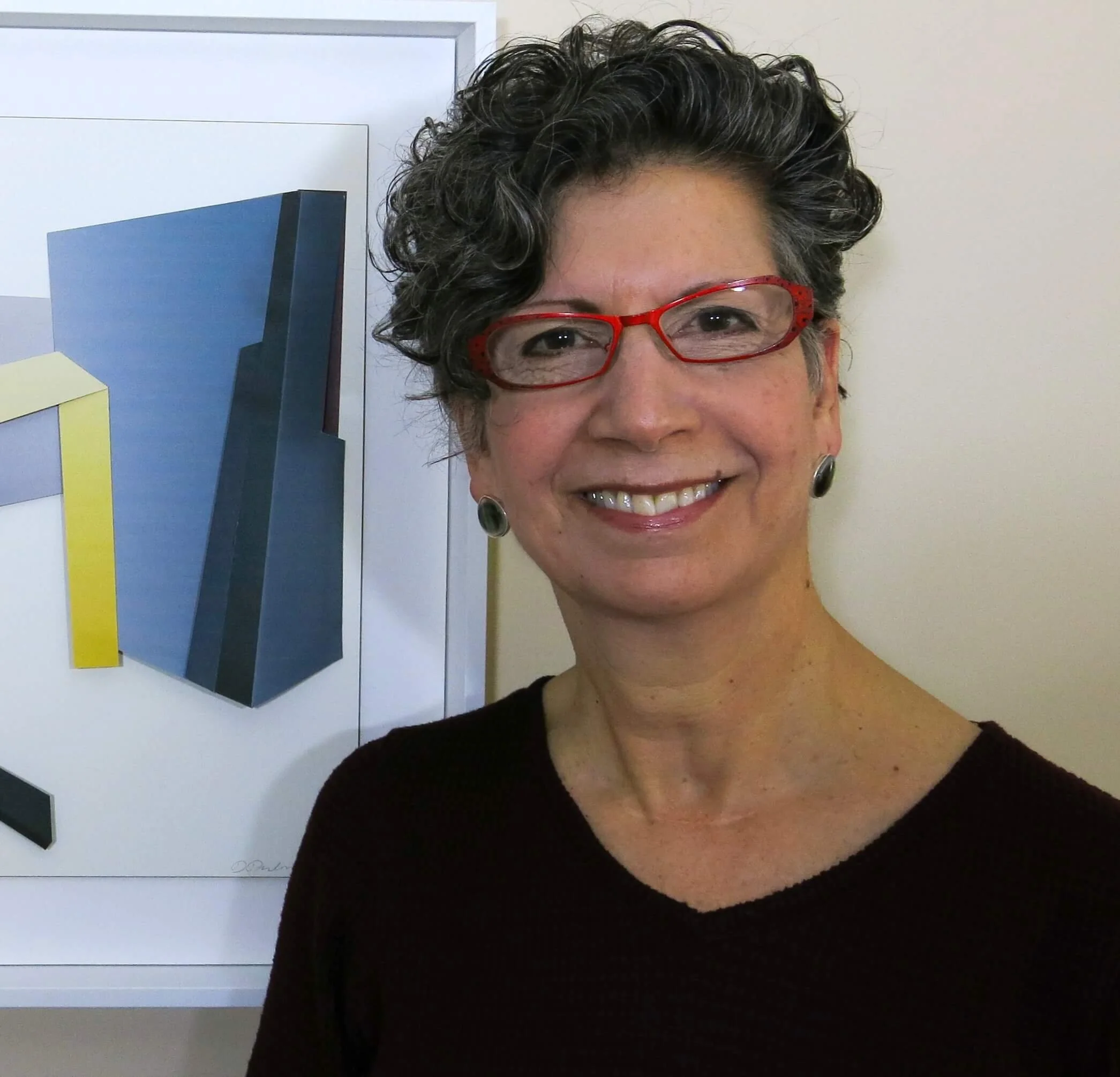Deborah Perlman
South Florida artist Deborah Perlman is a graduate of Boston University (BFA, Sculpture) and Cranbrook Academy of Art (MFA, Sculpture). After graduate school, Perlman ventured into communications, enriching her creativity through travel and special assignments. Since dedicating herself to art full-time, she has been featured in several art publications, and her work has appeared in exhibitions nationwide, earning awards. Perlman’s work is held in private collections, and she is a member of regional and national professional artist organizations.
Influenced by her training, Perlman creates abstract wall-mounted sculptures. She invites viewers into her "almost-but-not-quite-real" spaces, which land somewhere between the authentic and the imagined, drawing them into the scene to discover where they find themselves.
Perlman is currently working with paper, wire mesh, wire, fabric, wood, plastic, and adhesive, and she continually looks for new materials to integrate into each piece. Building three-dimensional forms, she adheres each element to the base, then juxtaposes them to highlight their points of contact and the shadows they cast.
Her influences span African sculpture, the Constructivism, Geometric Abstraction, and Cubism art movements, the work of Louise Nevelson, the "illogical perspective" of Giorgio de Chirico and M.C. Escher, Joseph Cornell’s shadow boxes, and Frank Stella’s metal reliefs, among many others.
Artist Statement
ENTER A WORLD SOMEWHERE BETWEEN REAL AND IMAGINED
Depicting an almost-but-not-quite-real world, somewhere between the authentic and the imagined, my art slides in and out of reality, compelling me to challenge previous ideas and established thoughts.
I find excitement and a sense of anticipation in three-dimensional forms and spaces. Creating wall-mounted sculpture draws me into a new world, challenging me to explore and go beyond what I know. When I create these spaces, I find a sense of mystery and get a peek into the unknown.
www.artbydperlman.com
What initially drew you to art?
Art gave me an outlet to express my thoughts, ideas, and feelings. As a child, my older sister was an artist, and she inspired me as well.
What elements of your life have ended up becoming a part of your art?
Just about all elements have become part of my art: my work expresses several major aspects of my life: reactions to global conflicts and environmental issues, my search for inner peace and safety, as well as expressions of awe for the natural world.
What about your practice do you find the most fulfilling and/or energizing?
The creative process of bringing my ideas to fruition as a visual entity. That includes lots of experimentation.
Tell us about your experience getting to where you are now. What has been the most important thing you’ve learned?
After earning my MFA in sculpture, I felt the need to explore the world outside the studio. I entered the business world and used my creative skills throughout my business career, and when I could afford to, I had a joyous reunion with my art. I now create art full-time. The most important thing I've learned is to keep my eyes open to all possibilities, follow my instincts, and be true to myself. Without that, I wouldn't call myself an artist.
How has ‘community’ impacted your artistic practice?
I am a member of local and national artist organizations and find that energizing and educational. I also attend numerous art openings, lectures, and seminars to expand my knowledge and awareness of what work is being done in the art world.





